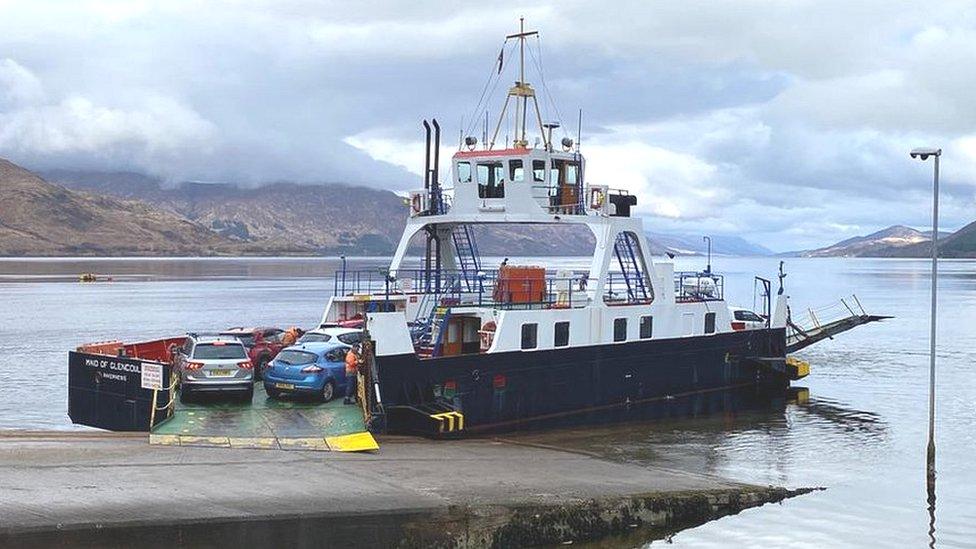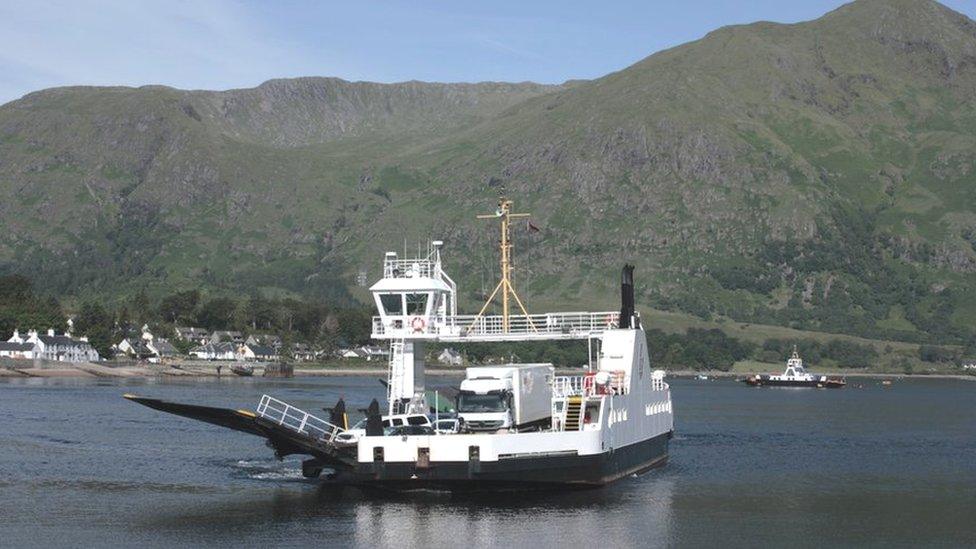Troubled Corran Ferry service out of action again
- Published

The Corran ferry relief boat, MV Maid of Glentoul, is out of service again
A free passenger-only ferry service is to be made available from Saturday on a troubled Highland route.
The main Corran ferry, MV Corran, and its relief vessel Maid of Glencoul are now both out of action.
Highland Council, which operates the lifeline route, said it was working to fix a defect with the Maid of Glencoul's steering system.
The Corran Ferry is the busiest single-vessel route in Scotland and carries more than 270,000 cars each year.
The local authority said the fault was discovered on Wednesday afternoon.
It is making the free service available on the Corran Narrows, and is in addition to a passenger ferry already running from Ardgour to Fort William Pier.
Highland Council said the crew had been working with an electrician to identify the issue with the Maid of Glencoul, but a specialist maritime engineer had now been called in.
Chairman of economy and infrastructure, Ken Gowans, said: "I want to give the reassurance that we are doing everything possible to support the communities until the Maid is back in operation."

MV Corran has been out of action since October
It comes after the local authority announced last week that MV Corran could be out of action until the middle of August.
It has been undergoing maintenance work in dry dock since October, after an issue with its propulsion was uncovered.
There has been significant disruption to the car ferry service already this year.
Between 15 April and the beginning of June there was a limited passenger service after the relief ferry MV Maid of Glencoul broke down.
People living in Fort William, Ardgour, Sunart, Ardnamurchan, Moidart, Morar, Morvern and the Isle of Mull are among those who regularly use it.
The main vessel, MV Corran, has capacity to take up to 28 cars. The MV Maid of Glencoul, can carry half that number.
Alternative routes to the five-minute crossing can involve journeys of up to 86 miles (138km), depending on the destination.
Related topics
- Published23 June 2023

- Published4 June 2023

- Published18 May 2023
